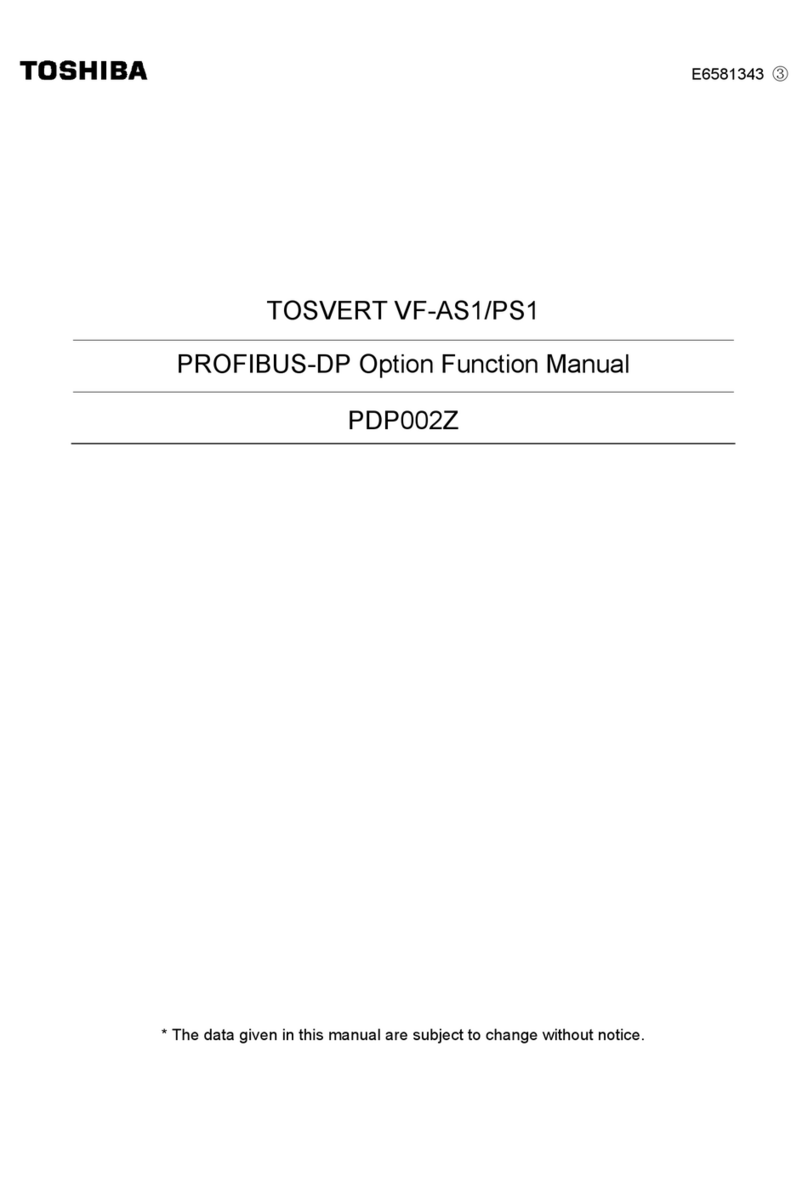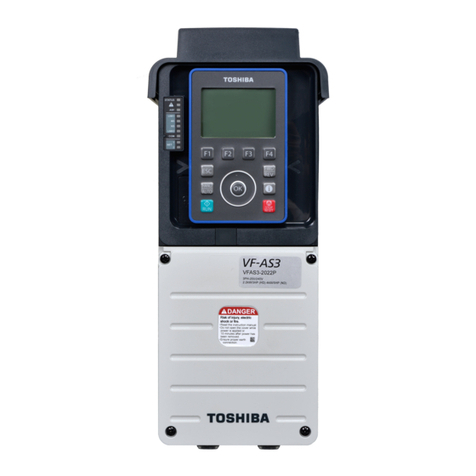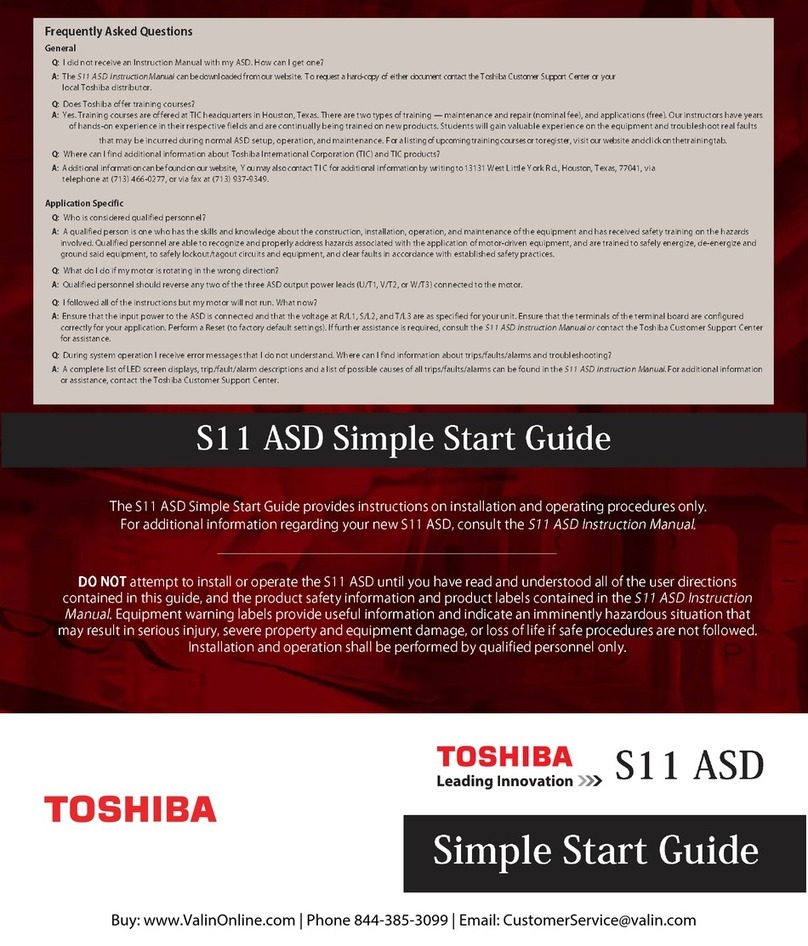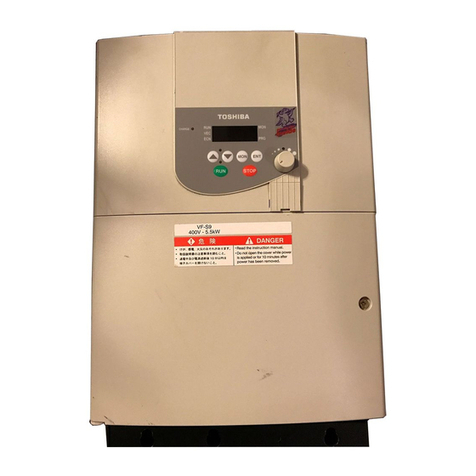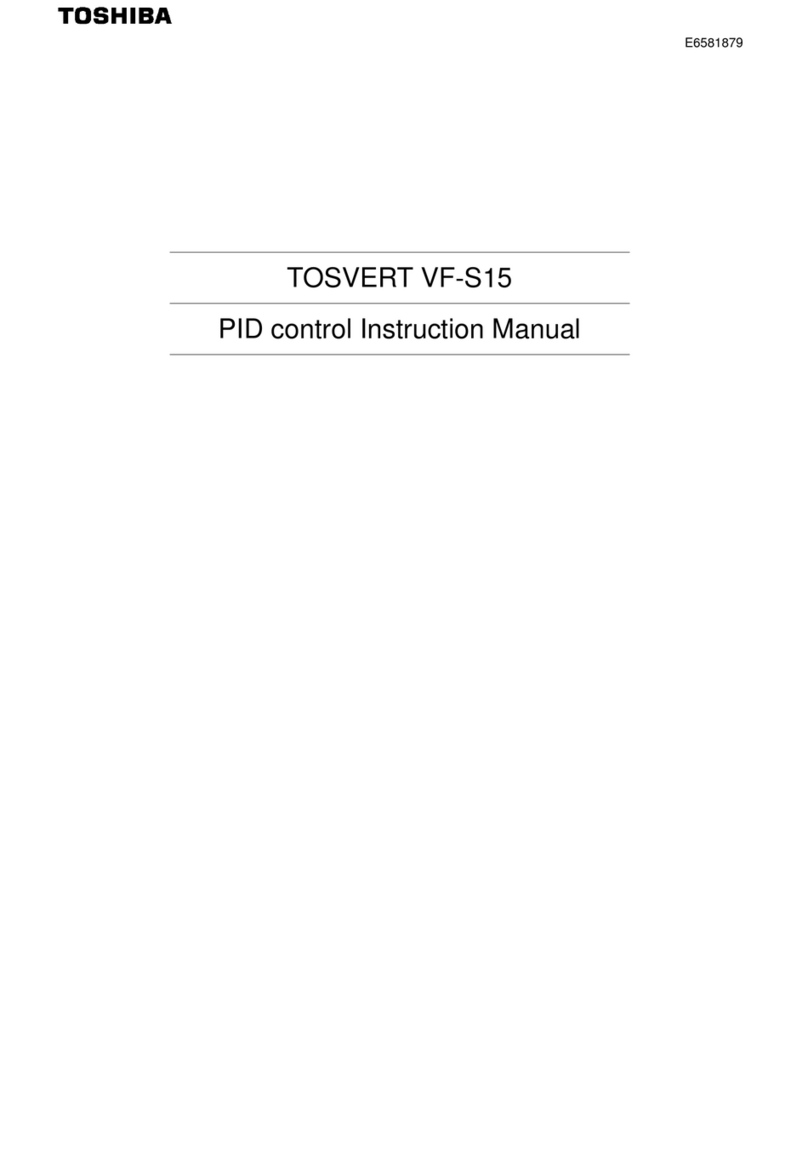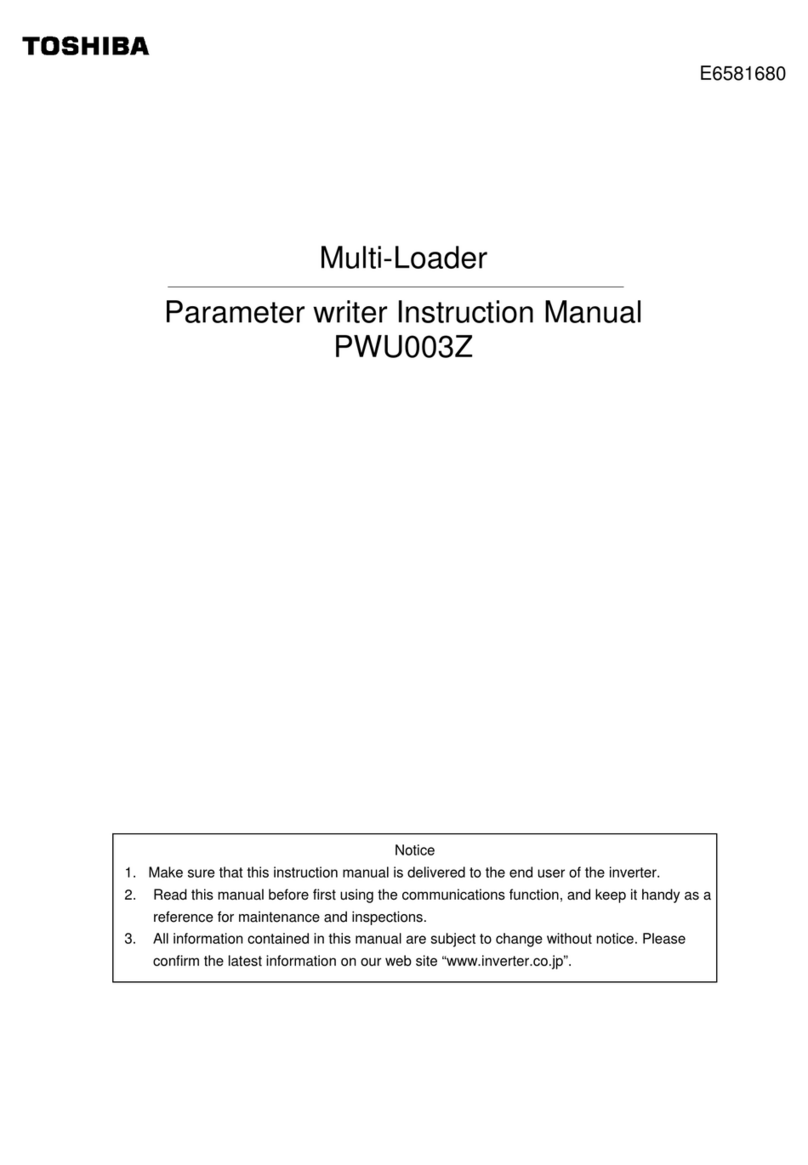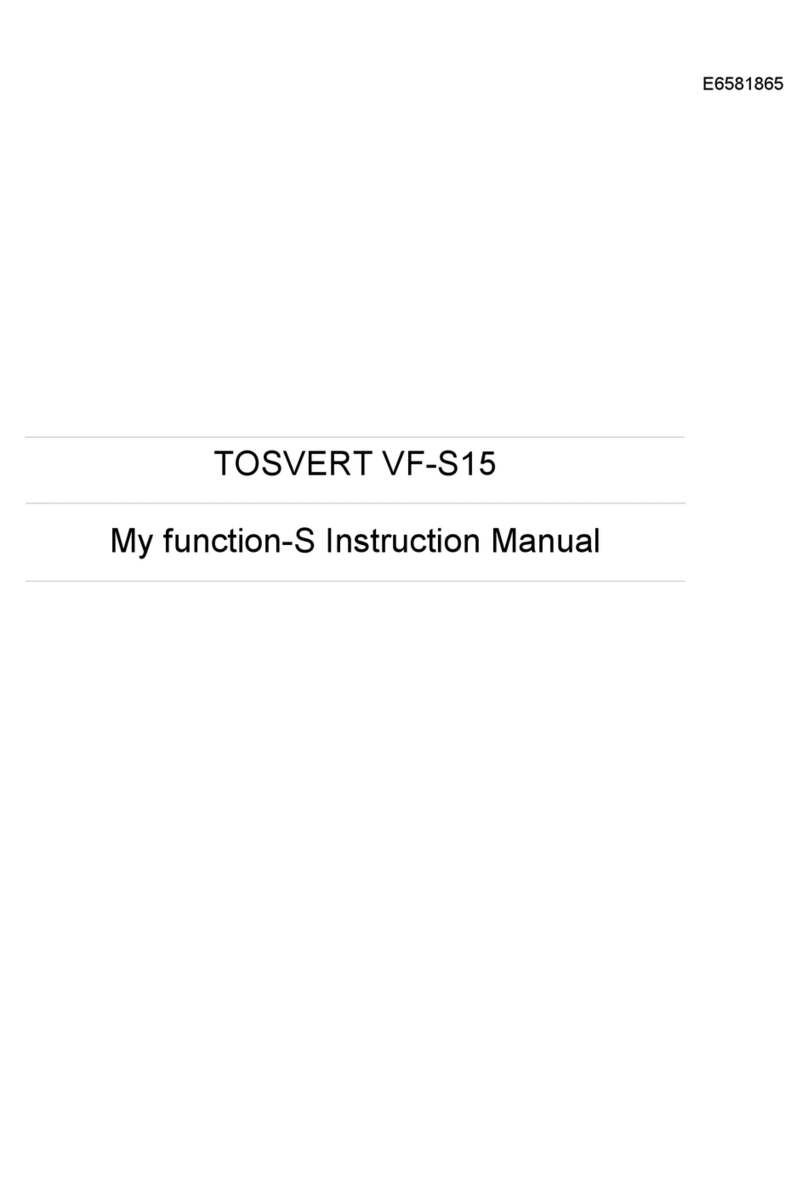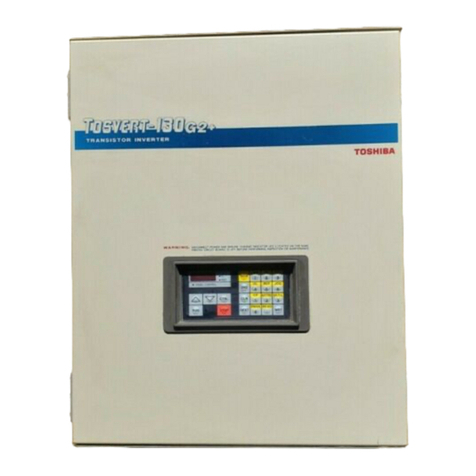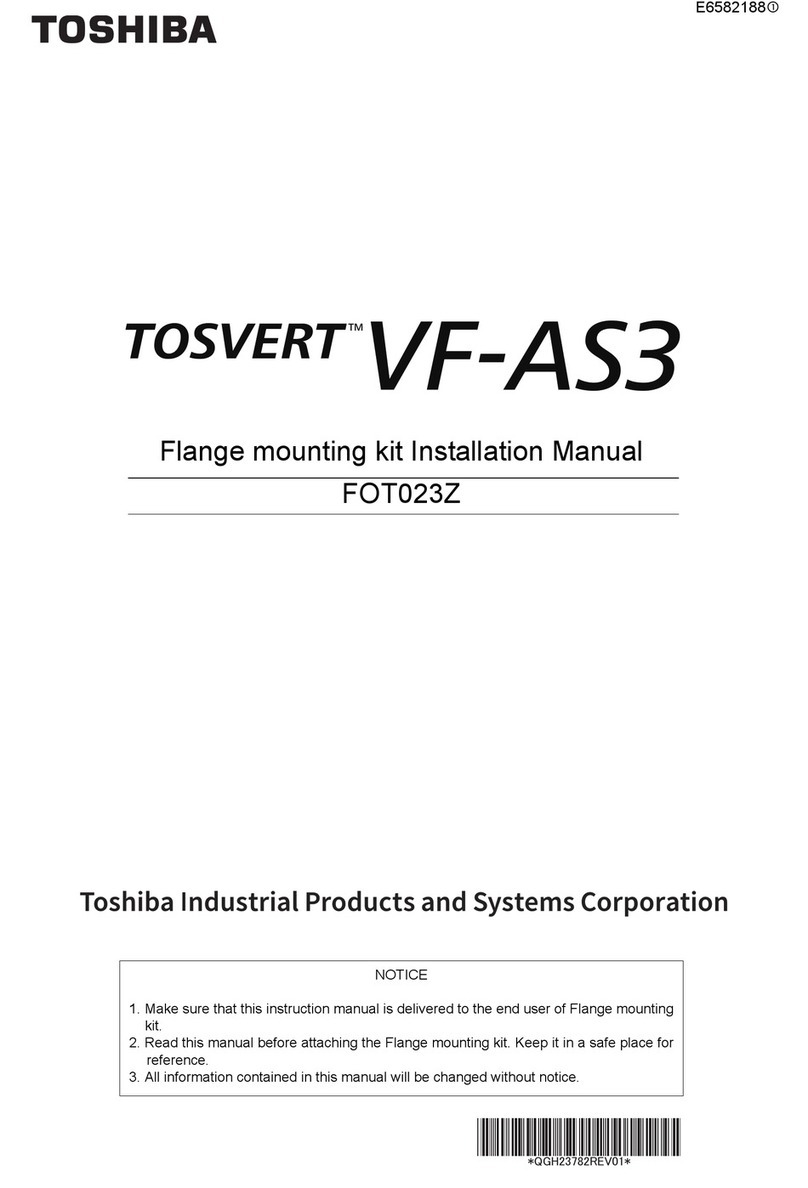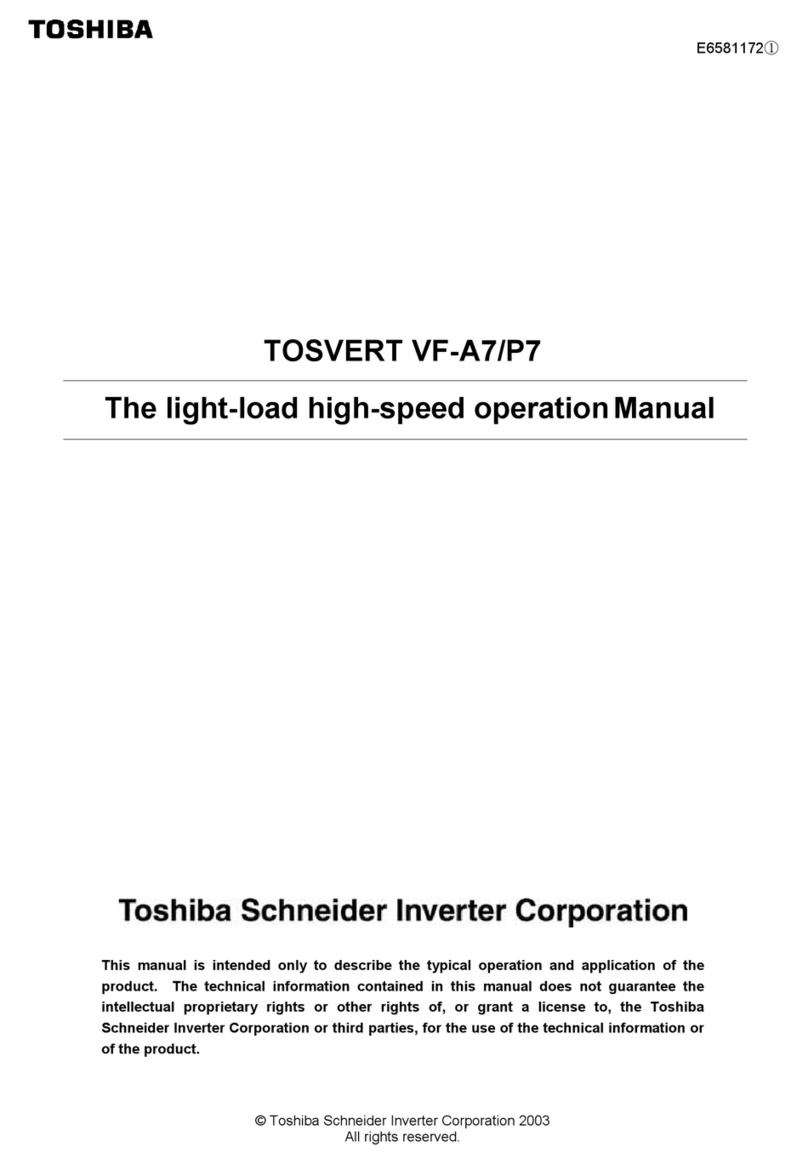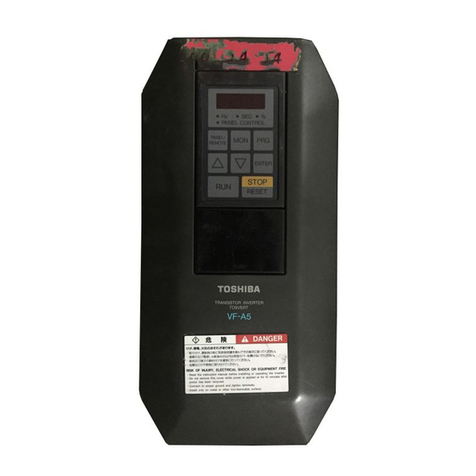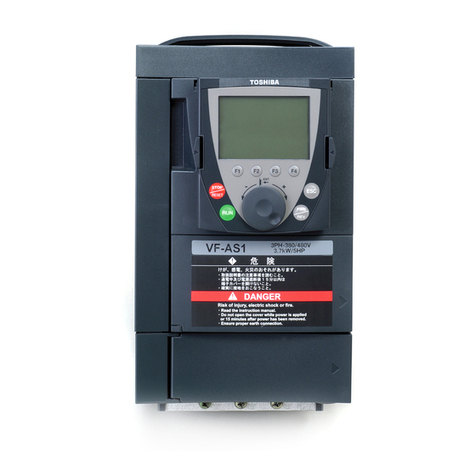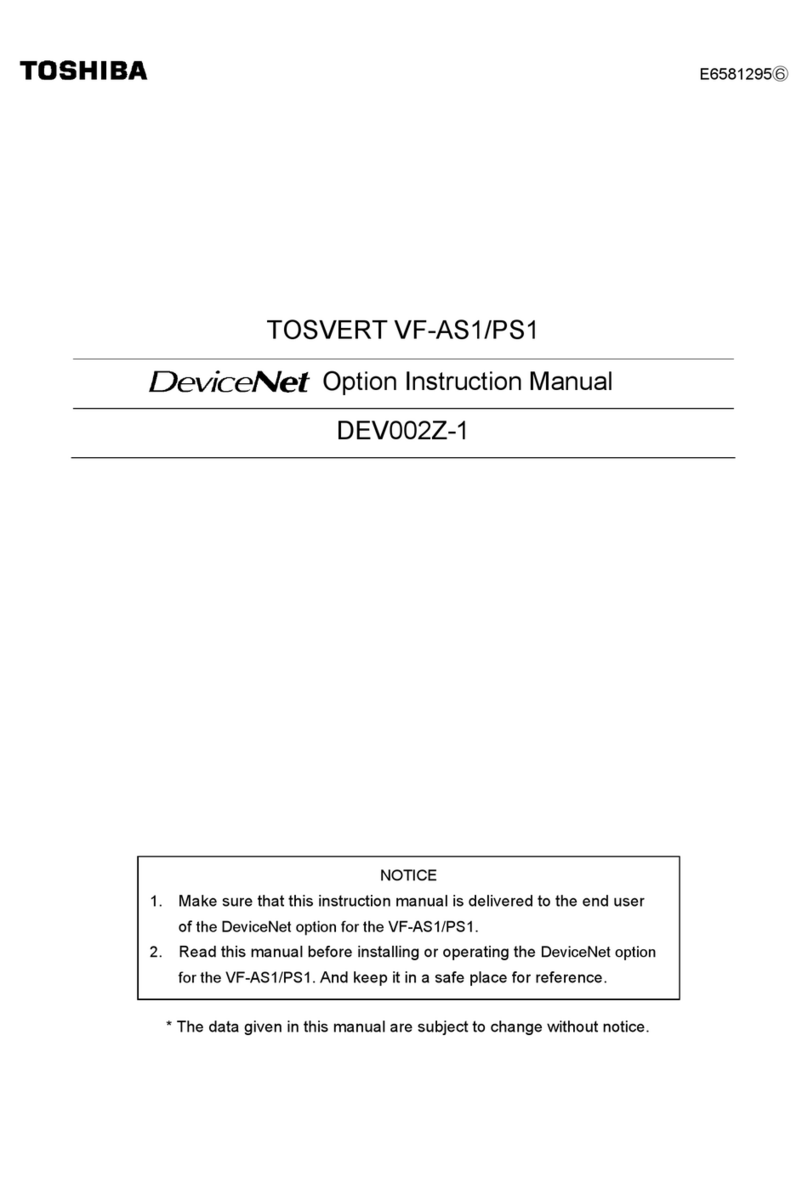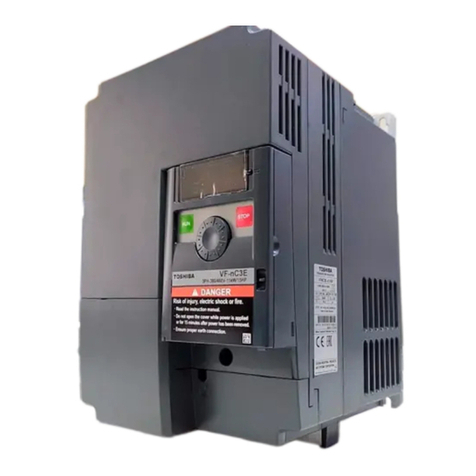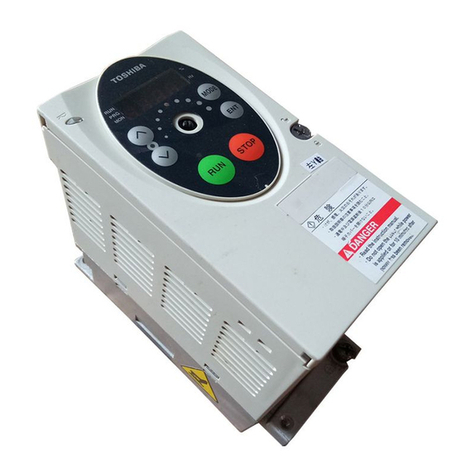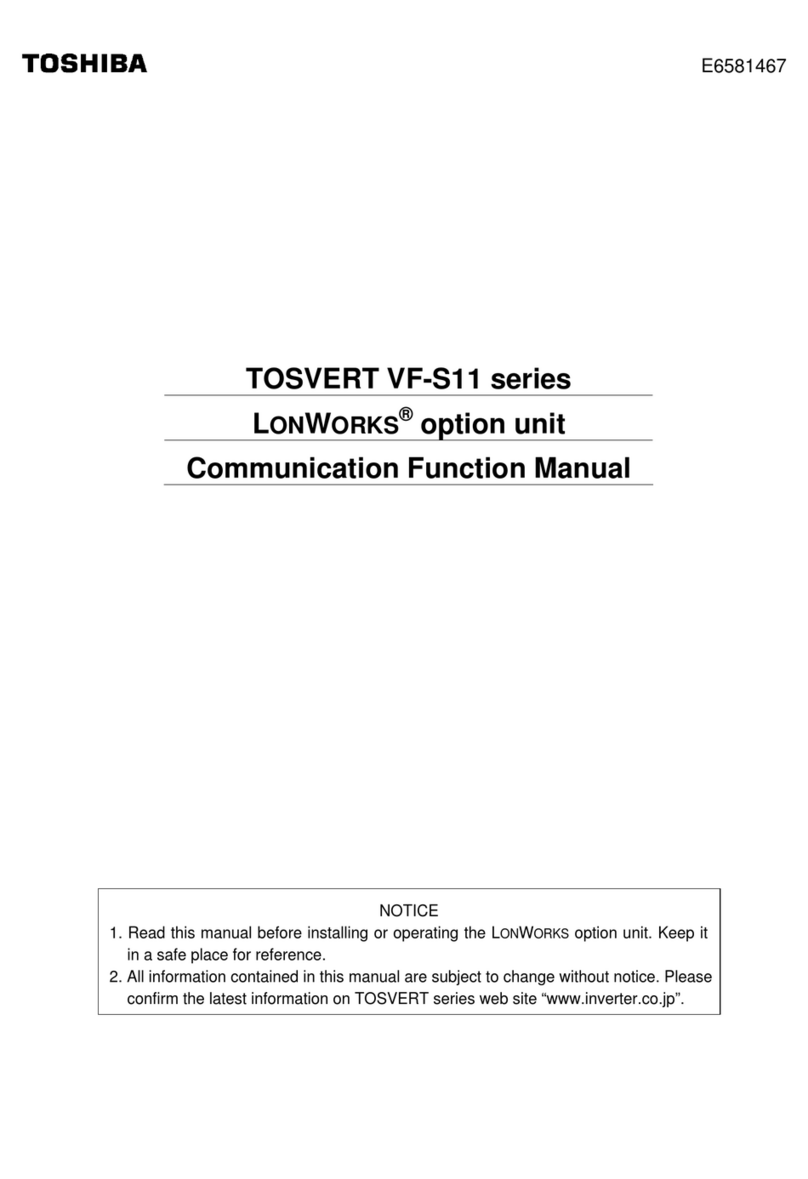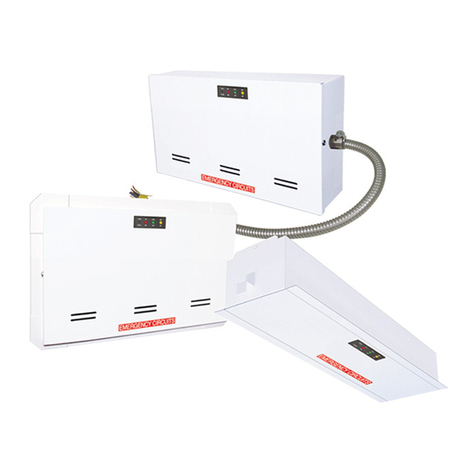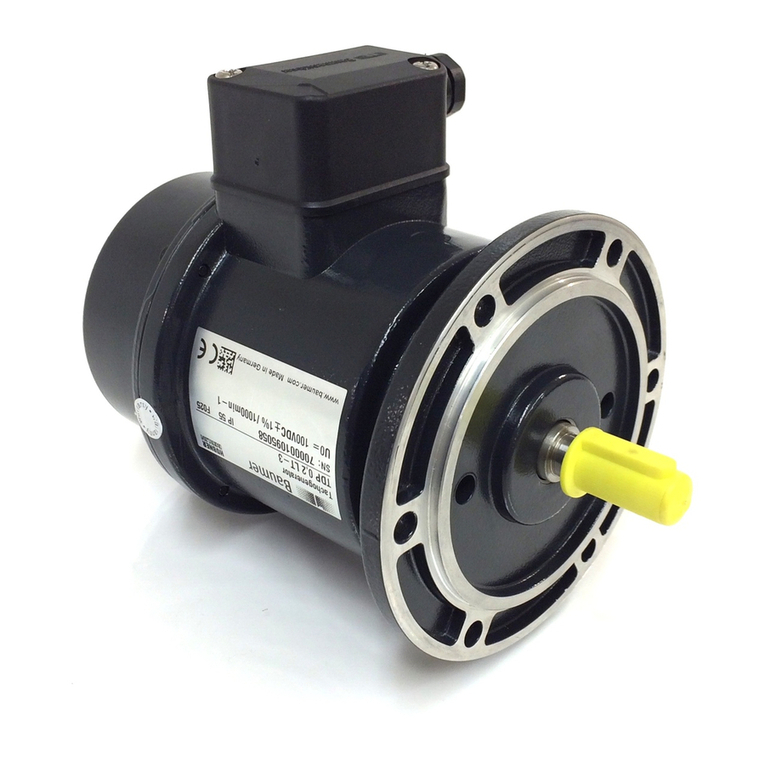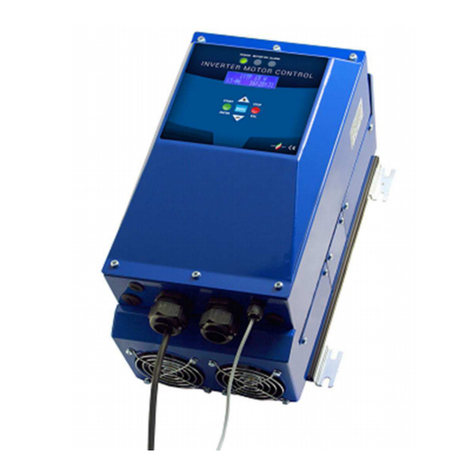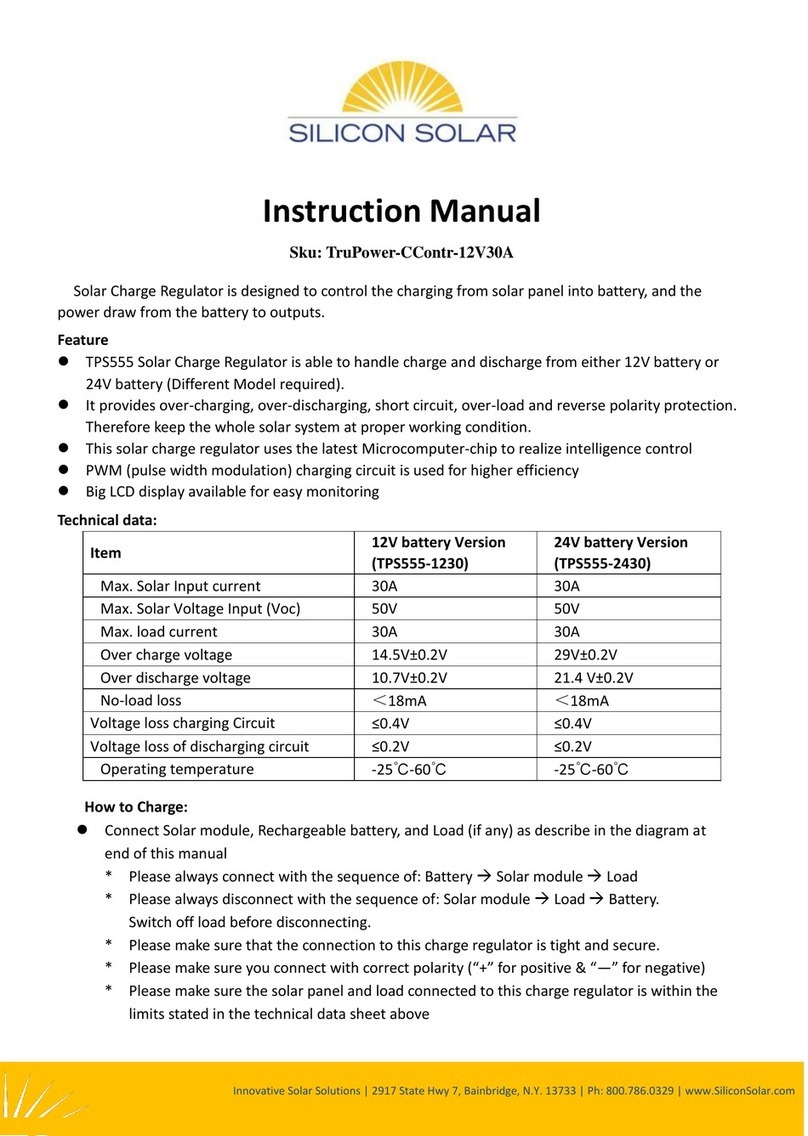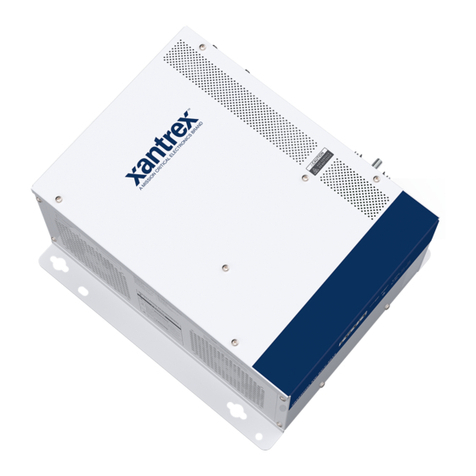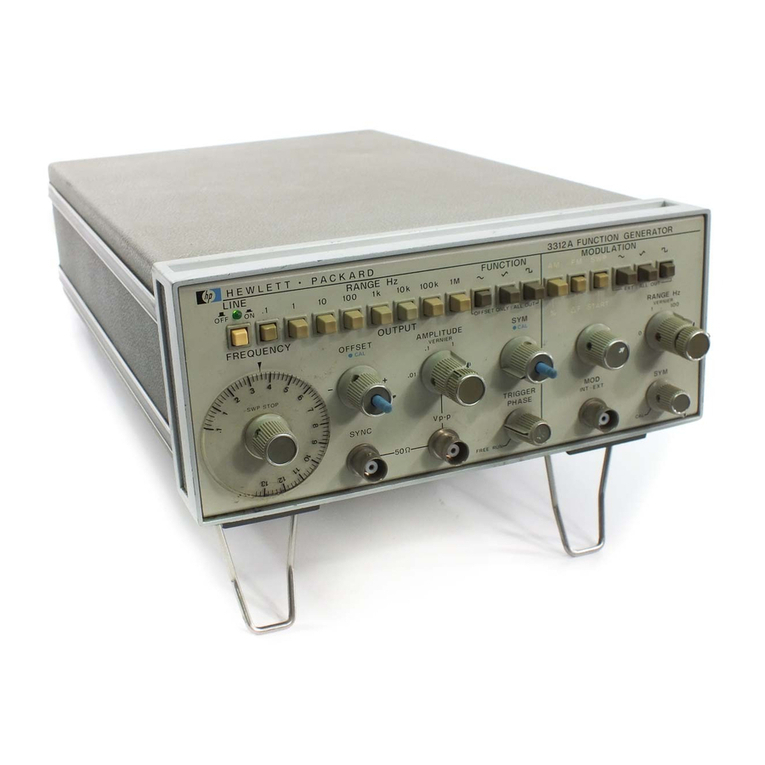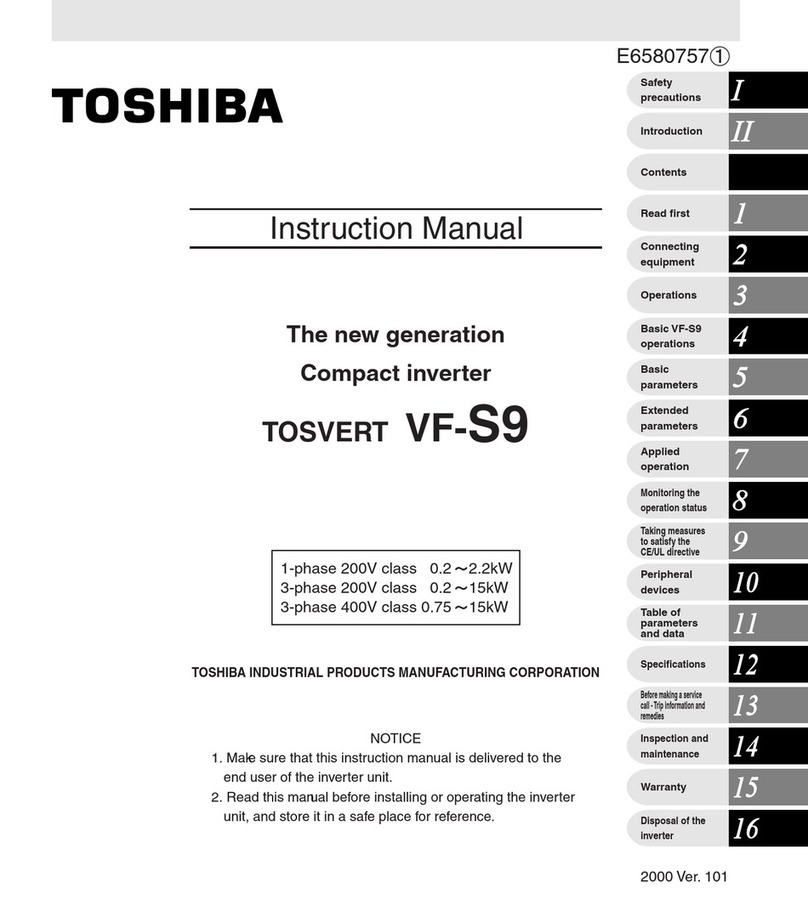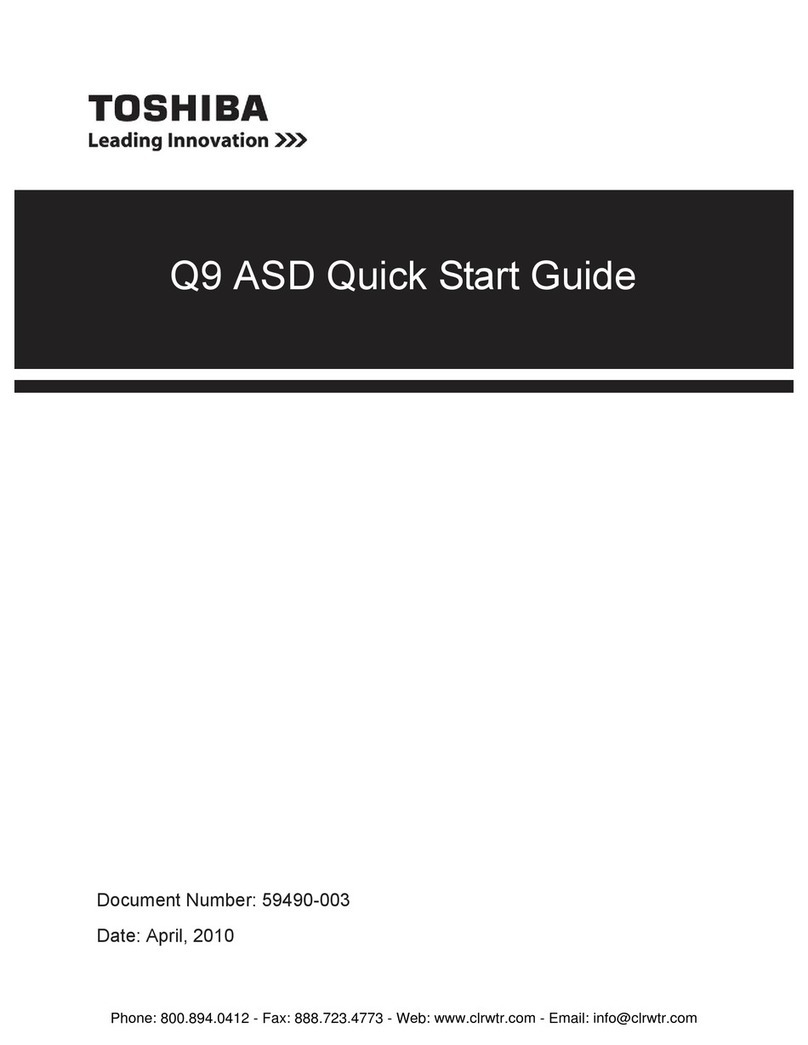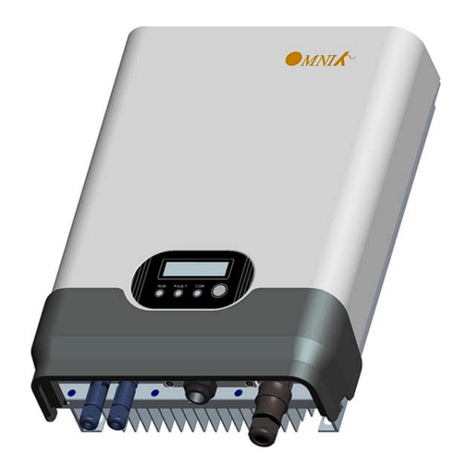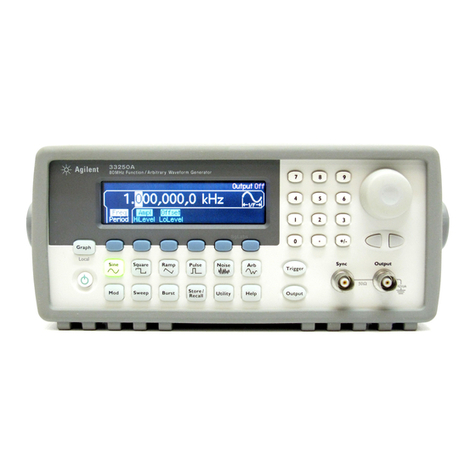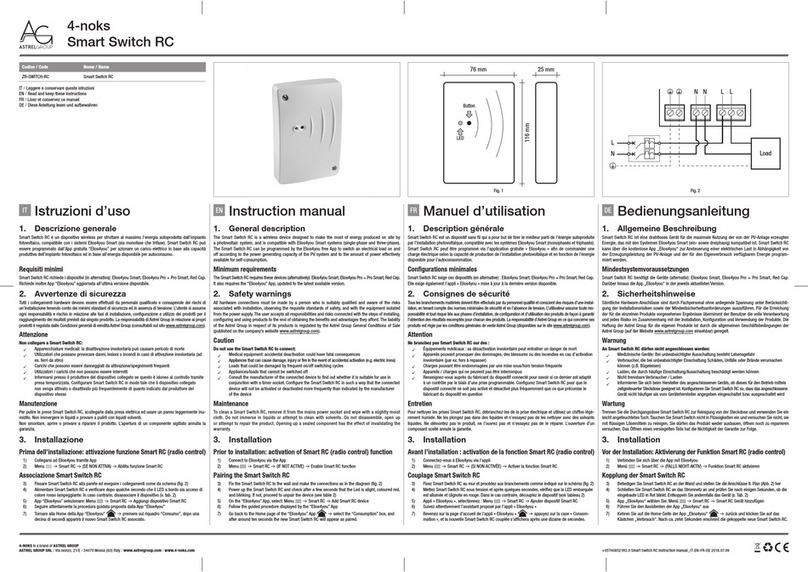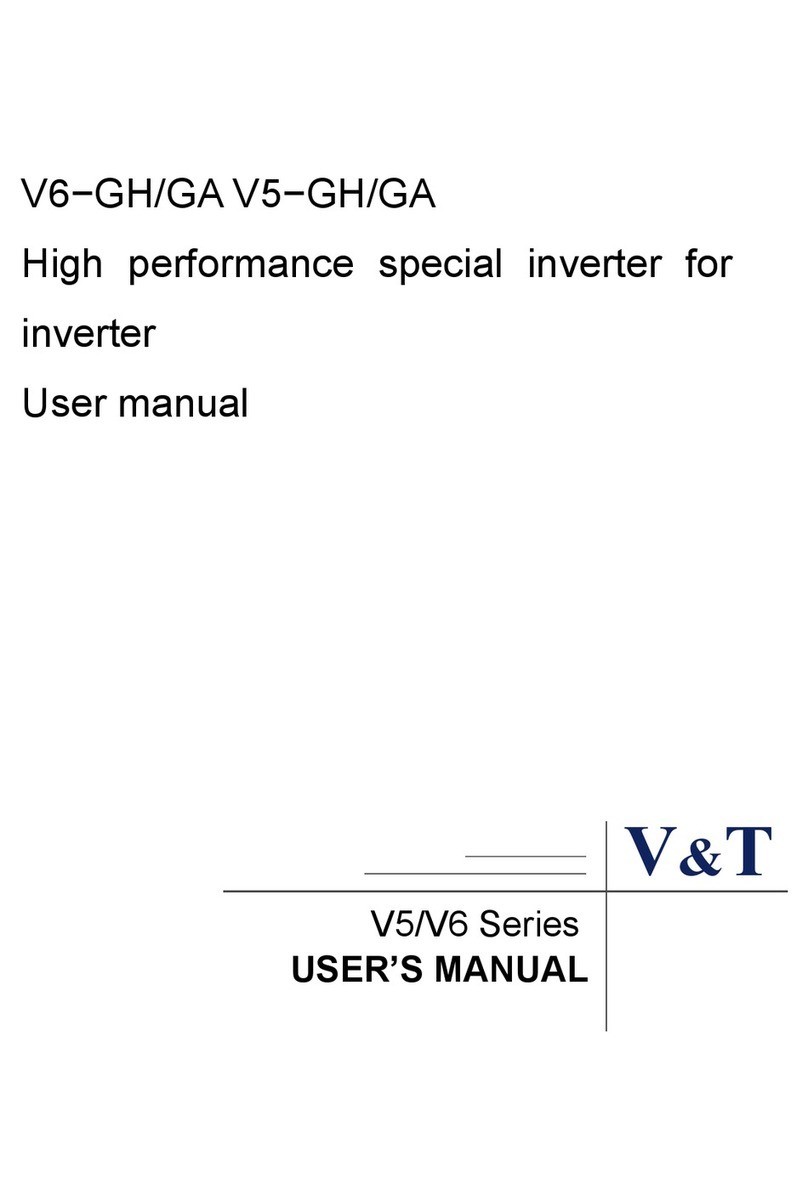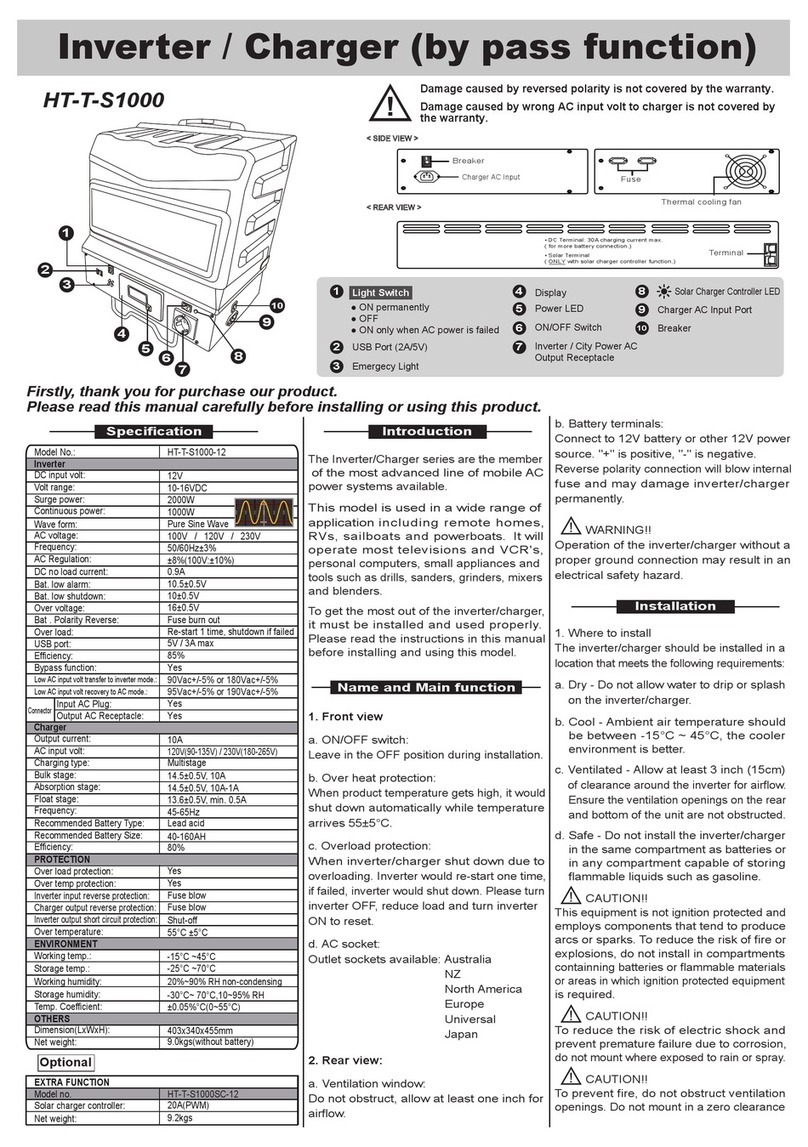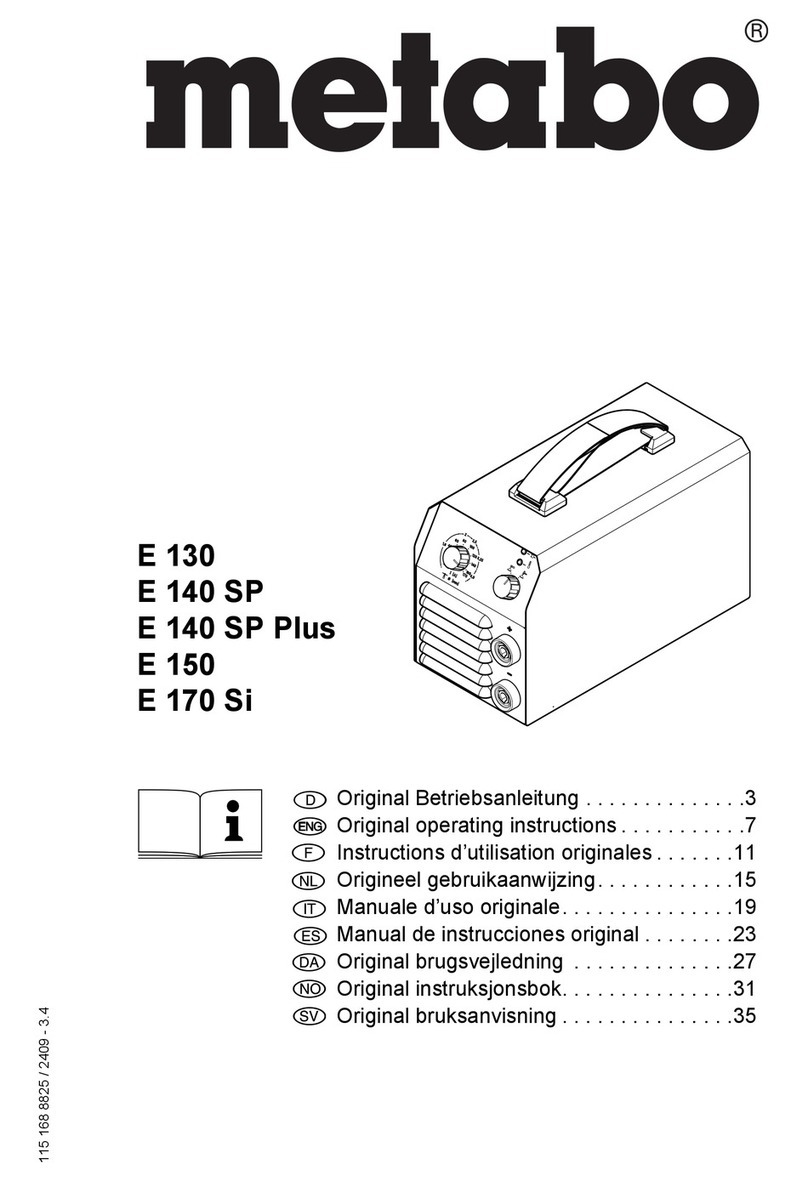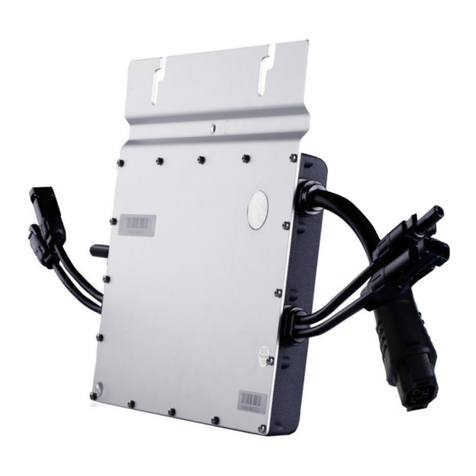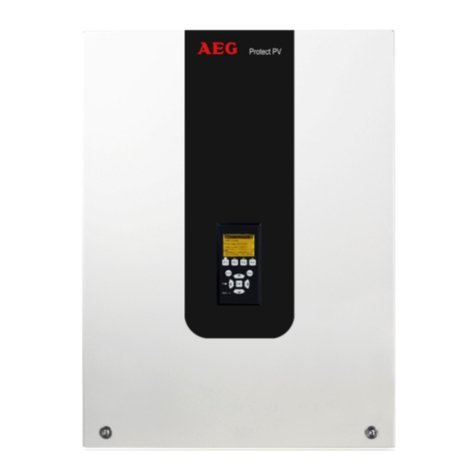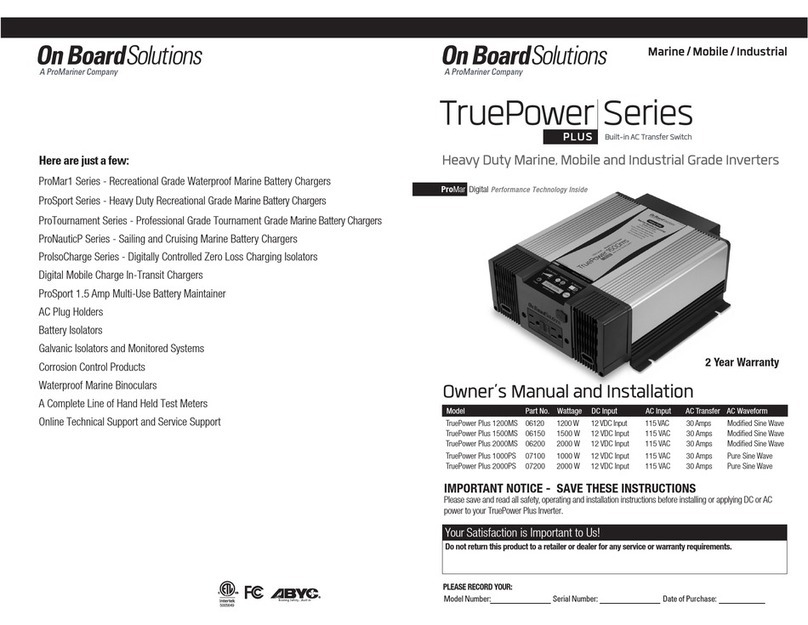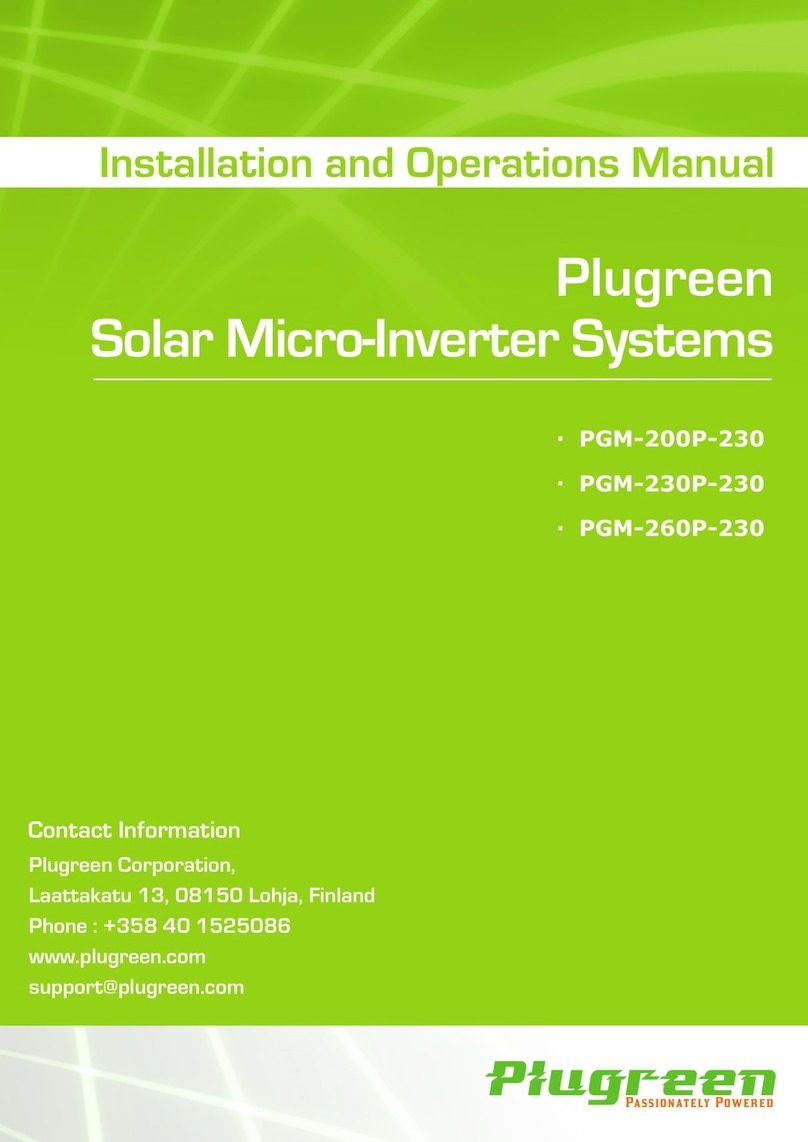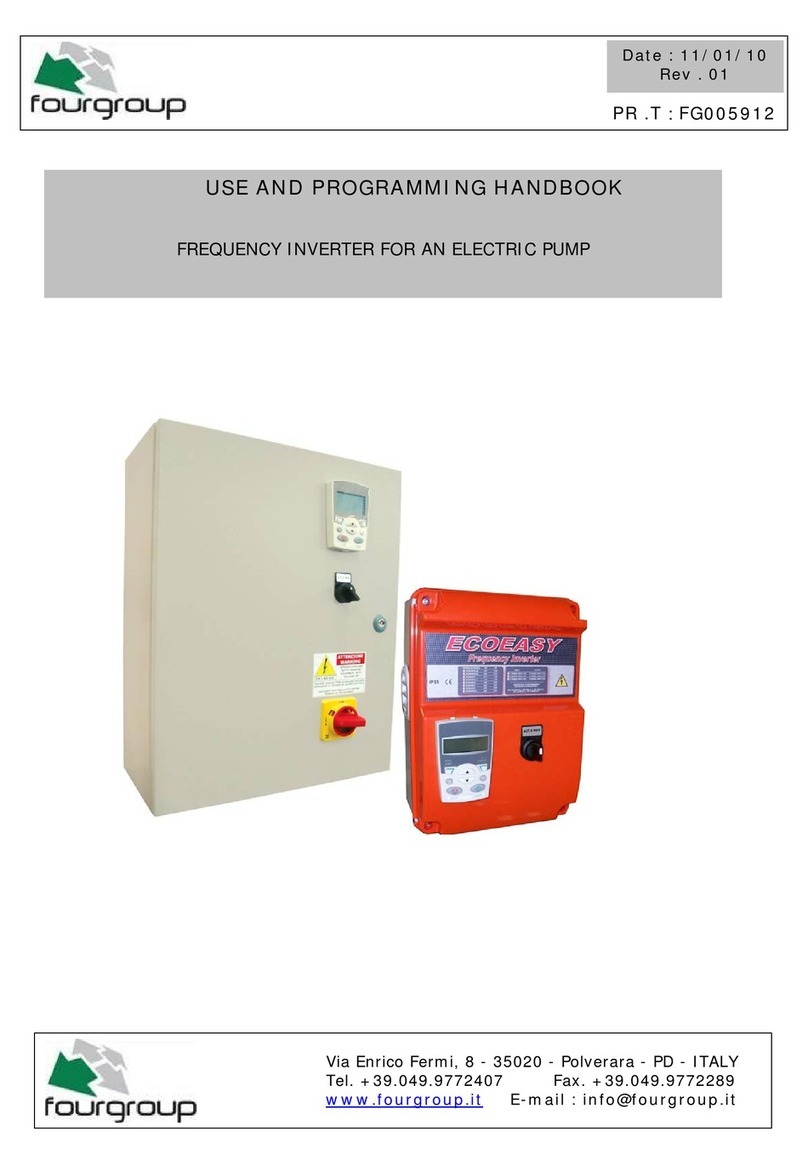
Explanation of the name plate label
3-phase 240V class
Item Specification
Input voltage class
Applicable motor (kW)
3-phase 240V class
VFNC3
3-phase 200V to 240V
150-60 seconds, 200%-0.5 second
3-phase 200V to 240V - 50/60Hz
Voltage 170 to 264V Note 4), frequency ±5%
RAL 3002 / 7016
IP20
0.1
Self-cooling Forced air-cooled
0.2 0.4
2001P
0.3
0.7(0.7)
2002P
0.6
1.4(1.4)
2004P
1.0
2.4(2.4)
2007P
1.6
4.2(3.6)
0.75 1.5 2.2 4.0
0.5 0.8 1.4 2.5 4.3 5.7 9.2
Type
Form
Rating
Power
supply
Output Capacity (kVA) Note 1)
1-phase 240V class / 1-phase 120V class
Item
Input voltage class
Applicable motor (kW)
Specification
1-phase 240V class
Note 1. Capacity is calculated at 220V for output voltage.
Note 2. Indicates rated output current setting when the PWM carrier frequency (parameter ) is 4kHz or less. Between 5 kHz and 12 kHz, the rated output current is indicated in the ( ). Above
13 kHz, the output current must be reduced. The default setting of the PWM carrier frequency is 12kHz.
Note 3. Maximum output voltage is the same as the input voltage. In case of 1-phase 120V class, maximum output voltage is same as twice the input voltage.
With regard to 120V models, the output voltage may decrease about 10 to 20 % if motor load is applied. When operating VF-nC3 in conjunction with general-purpose motor (200V),
it is necessary to reduce the motor load.
Note 4. 180V-264V (240V class), 90V-132V (120V class) when the inverter is used continuously (load of 100%).
Note 5. Required power supply capacity varies with the value of the power supply side inverter impedance (including those of the input reactor and cables).
VFNC3S VFNC3S
3-phase 200V to 240V
150-60 seconds, 200% -0.5 second
1-phase 200V to 240V - 50/60Hz
Voltage 170 to 264V Note 4), frequency ±5%
3-phase 200V to 240V
150-60 seconds, 200%-0.5 second
1-phase 100V to 120V – 50/60Hz
Voltage 85 to 132V Note 4), frequency±5
RAL 3002 / 7016
EMC filter
IP20
0.1
Self-cooling Forced air-cooled
1-phase 120V class
RAL 3002 / 7016
IP20
Self-cooling
Forced air-cooled
0.2 0.4
2001PL
0.3
0.7(0.7)
2002PL
0.6
1.4(1.4)
2004PL
1.0
2.4(2.4)
2007PL
1.6
4.2(3.2)
2015PL
2.9
7.5( 7.5)
2022PL
3.9
10.0(9.1)
0.75 1.5 2.2 0.1
1001P
0.3
0.7(0.7)
0.2
1002P
0.6
1.4(1.4)
0.4
1004P
1.0
2.4(2.4)
1007P
1.6
4.2(4.0)
0.75
0.5 0.8 1.3 2.3 4.0 5.4 0.4 0.7 1.3 2.1
Type
Form
Output Capacity (kVA) Note 1)
Rating
Output current(A) Note 2)
Output voltage Note 3)
Overload current rating
Voltage-frequency
Allowable fluctuation
R
equired Power supply capacity (kVA) Note 5)
Protective method (IEC60529)
Cooling method
Color
Built-in filter
Output current(A) Note 2)
Output voltage Note 3)
Overload current rating
Voltage-frequency
Allowable fluctuation
Required Power supply capacity (kVA) Note 5)
Protective method (IEC60529)
Cooling method
Color
Built-in filter
Power
supply
2015P
2.9
7.5( 7.5)
2022P
3.9
10.0(8.5)
2037P
6.4
16.7(14.0)
Voltage class Applicable
motor (kW) Inverter type Dimensions (mm)
W H D W1 H1 H2 Drawing Approx.
weight(kg)
0.1
0.2
0.4
0.75
1.5
2.2
4.0
0.1
0.2
0.4
0.75
1.5
2.2
0.1
0.2
0.4
0.75
3-phase 240V
1-phase240V
VFNC3-2001P
VFNC3-2002P
VFNC3-2004P
VFNC3-2007P
VFNC3-2015P
VFNC3-2022P
VFNC3-2037P
VFNC3S-2001PL
VFNC3S-2002PL
VFNC3S-2004PL
VFNC3S-2007PL
VFNC3S-2015PL
VFNC3S-2022PL
VFNC3S-1001P
VFNC3S-1002P
VFNC3S-1004P
VFNC3S-1007P
72
102
121
131
156
141
60
93
126 157 14
13
13
13
C
60
93
60
93
131
131
131
118
121
131
121
156
102
102
105
140
130
170
72
72
105
105
1-phase120V
130
130
118
118
12
12
B
B
B
A
A
2.0
1.0
1.0
1.0
1.5
1.5
1.5
Note 1. H2 : Height of EMC plate mounting area
Note 2. Here are the available EMC plate
Fig.A : EMP007Z (Approx. weight : 0.3kg)
Fig.B : EMP008Z (Approx. weight : 0.4kg)
Fig.C : EMP009Z (Approx. weight : 0.5kg)
Note 3. The models shown in Fig. A to Fig. B are
fixed at two points: in the upper left and
lower right corners.
Note 4. The model shown in Fig. A is not
equipped with a cooling fan.
The models of 1-phase 240V and 1-phase
120V shown in Fig.B are equipped with a
cooling fan on the top of the unit.
Note 5. Height measurements do not include the
protrusions for installation.
Digital setting: within ±0.1% of the max. frequency (-10 to +60°C)
Analog setting: within ±1.0% of the max. frequency (25°C ±10°C)
Setting dial on the front panel, external frequency potentiometer (connectable to a potentiometer with a rated impedance of 1k - 10kΩ),
0 - 10Vdc / 0 - 5Vdc (input impedance: VI=40kΩ, 4 - 20mAdc (Input impedance: 250Ω). Note 1)
The characteristic can be set arbitrarily by two-point setting. Possible to set: analog input (VI).
Setting of the jump frequency and the range.
Upper-limit frequency: 0 to max. frequency, lower-limit frequency: 0 to upper-limit frequency
Adjustable within a range of 2k to 16kHz (default: 12kHz).
Braking start-up frequency: 0 to maximum frequency, braking rate: 0 to 100%, braking time: 0 to 25.5 seconds, emergency DC braking.
None (braking module is optional)
The RUN and STOP keys on the operation panel are used to start and stop operation, respectively.
Forward/reverse run possible through communication and logic inputs from the terminal block.
1c-contact output: (250 V ac - 2 A (cosΦ=1): At resistive load, 30 V dc -1 A, 250 V ac - 1 A (cosΦ=0.4))
Over-current, overvoltage, overheat, output short-circuit., ground fault, inverter overload, over-current through arm at start-up,
over-current through load at start-up, CPU fault, EEPROM fault, RAM fault, ROM fault,communication error. (Selectable:
emergency stop, under-voltage, small current, over-torque, motor overload, input phase failure, output phase failure)
Operation frequency, operation frequency command, forward/reverse run, output current, input voltage (DC detection),output voltage,
torque, torque current, load factor of inverter, input power, output power, information on input terminals, information
on output terminals, version of CPU1, version of CPU2, PID feedback value, frequency command (after compensation),
logic input terminals setting, causes of past trips 1 to 4, parts replacement alarm, cumulative operation time
Stores data on the past four trips: number of trips that occurred in succession, operation frequency, direction of rotation, load current, input voltage
(DC detection), output voltage, information on input terminals, information on output terminals, and cumulative operation time when each trip occurred.
Analog output for meter: 1 mA dc full-scale dc ammeter
0 - 20 mA (4 to 20 mA) output: DC ammeter (allowable load resistance: Less than 750 Ω)
0 - 10 V output: DC voltmeter (allowable load resistance: Over 1kΩ)
Indoors; not exposed to direct sunlight, corrosive gas, explosive gas, flammable gas, oil mist, or dust; and vibration of less than 5.9 m/s
2
(10 to 55 Hz).
3000 m or less (current reduction required over 1000 m) Note 2)
-10 to +60°C Note 3)
-25 to +70°C
5 to 95% (free from condensation and vapor).
Note 1. Be careful, if 4-20mA is selected, when the inverter's power is ON, the internal impedance is 250Ω, but when the power is OFF, the internal impedance increases very much to
approximately 40kΩ.
Note 2. Current must be reduced by 1% for each 100 m over 1000 m. For example, 90% at 2000 m and 80% at 3000 m.
Note 3. Above 40°C : Remove the protective seal from the top of VF-nC3.
Above 50°C: Remove the seal from the top of the inverter and use the inverter with the output current reduced.
Side by side installation (with no space between inverters): Remove the seal from the top of each inverter. When installing the inverter where the ambient temperature will rise above
40°C, remove the seal from the top of the inverter and use the inverter with the output current reduced.
Jog mode, if selected, allows jog operation from the terminal board.
Frequency reference +15-speed operation possible by changing the combination of 4 contacts on the terminal board.
Capable of restarting automatically after a check of the main circuit elements in case the protective function is activated. 10 times (Max.) (selectable with a parameter)
V/f constant, variable torque, automatic torque boost, vector control, automatic energy-saving. Auto-tuning.
Base frequency (20 - 400Hz) adjusting to 1 & 2, torque boost (0 - 30%) adjusting to 1 & 2, adjusting frequency at start (0.1 - 10Hz)


